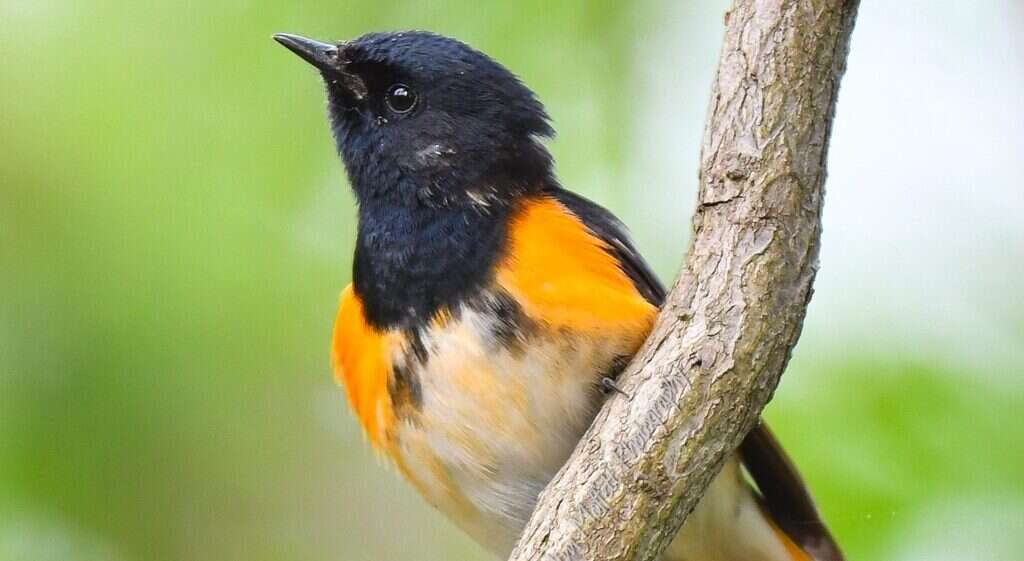Avian Research
Due to its size and unique combination of habitats, the Great Marsh hosts a diverse array of avian life. To date, nearly 200 species of birds have been identified on the property. Of these, the Great Marsh hosts several rare and uncommon species throughout the entire year and often in numbers not seen in other locations in Southeastern Pennsylvania. With the ongoing generous and carefully planned conservation efforts of the Moore family, Brandywine Conservancy and the French & Pickering Creeks Conservation Trust, the Great Marsh will continue to be an extremely valuable laboratory for ornithological research and educational activities long into the future.

astern Towhees
While Eastern Towhees are still common and widespread, their population trends in the Northeast, where they are listed as a Species of Greatest Conservation Need, are alarming.
Led by researcher, Shelly Eshleman, this project began in 2022 and continued into 2024.
Read more about the project here.

MOTUS
Understanding the movement of migratory animals is an integral part of preserving them in a rapidly changing world. One of our ongoing research efforts at the Great Marsh has been implementing the Motus Wildlife Tracking System (MOTUS). Data collected through our test tags and antenna systems allows researchers to understand migratory species with greater efficiency and precision, thus allowing for greater protection of these species. Find out what birds have been flying through the Great Marsh on our MOTUS page.
Click for more information:
The Christmas Bird Count
Bluebird Houses
Great Marsh eBird Hotspot Page

Avian Activity at GMI
Winter (December – February)
The winter season is the quietest time of year but still offers opportunities to see rare species such as Rough-legged Hawk, Black-capped Chickadees, Rusty Blackbirds and large numbers of wintering sparrows.
Spring (March – May)
Spring migration is one of the best seasons to find a variety of uncommon and rare species. March and early April start with waterfowl migration and opportunities exist to see flocks of Tundra Swan and Snow Geese flying overhead. American Black Ducks can be common along with scores of Wood Ducks arriving to breed. Blue-winged Teal are regular visitors. With some luck you might catch Sandhill Cranes stopping in during their migration and American Bittern are usually present although they can be hard to spot and Common Gallinule have been spotted. Virginia Rails and Soras are commonly heard especially early in the morning. Early May also brings many species of Warbler to Great Marsh including: Golden-winged, Nashville, Cape May and Hooded (which set up to breed in the upland forest areas). The middle of May heralds the end of migration, at which time Gray-cheeked Thrush can be found.
Summer (June – August)
The summer months see the number of species diminish but there are a number of breeding species that can be difficult to find elsewhere in Chester County. Confirmed and suspected breeding species include: Hooded Merganser, Great Blue and Green Heron, Virginia Rail, Black-billed Cuckoo, Bald Eagle, Blue-winged Warbler, Hooded Warbler, Chestnut-sided Warbler, and Scarlet Tanager.
Fall (September – November)
Fall Migration brings back a number of spring migrants along with a few birds that do not typically migrate east of the Allegheny mountains in the spring. September skies can be filled with hundreds of Broad-winged hawks moving south with Sharp-shinned Hawks and Northern Harriers following in October. Common Nighthawks can be easily seen at dusk in early September. Least Flycatchers are a possibility from the end of August through the middle of September. Philadelphia Vireos are possible in September as well. September is also a good time to look for Connecticut Warblers. October and early November brings the sparrows and the Great Marsh is an especially good spot to see Lincoln’s Sparrows. White-crowned, Vesper, Savannah and returning Fox Sparrows are all possibilities as well.
